We have had a great run and presented some amazing shows. Scroll down the page to see highlights from the 3 years of the gallery.
Thank you to everyone who came out to support art in SouthCoast MA. Buy local!!!
Highlights
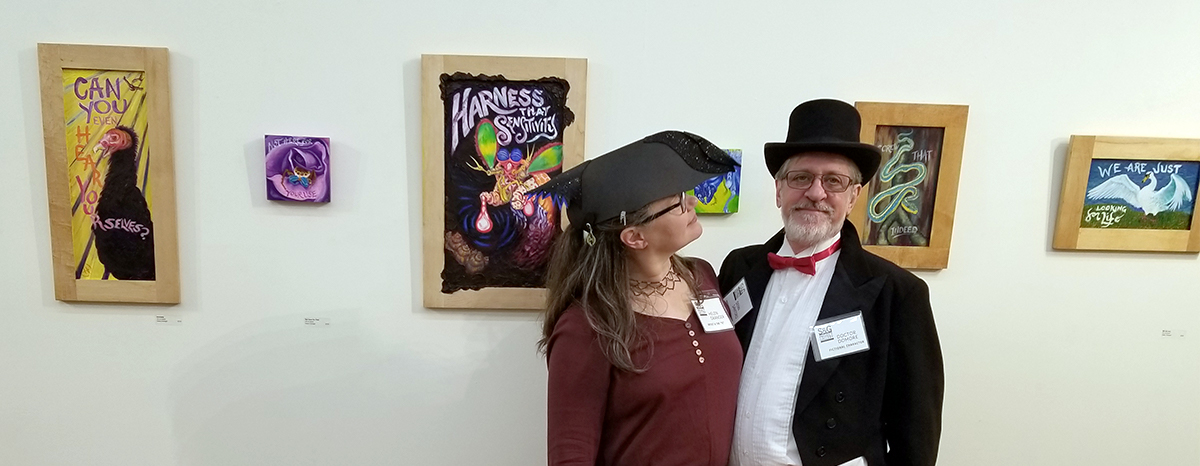
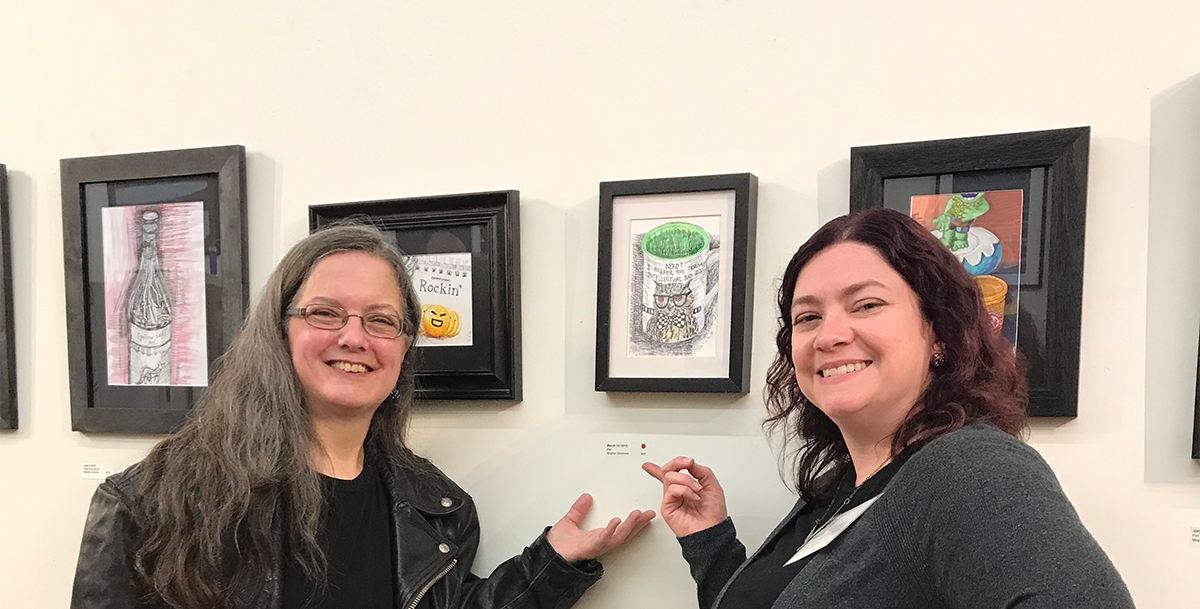
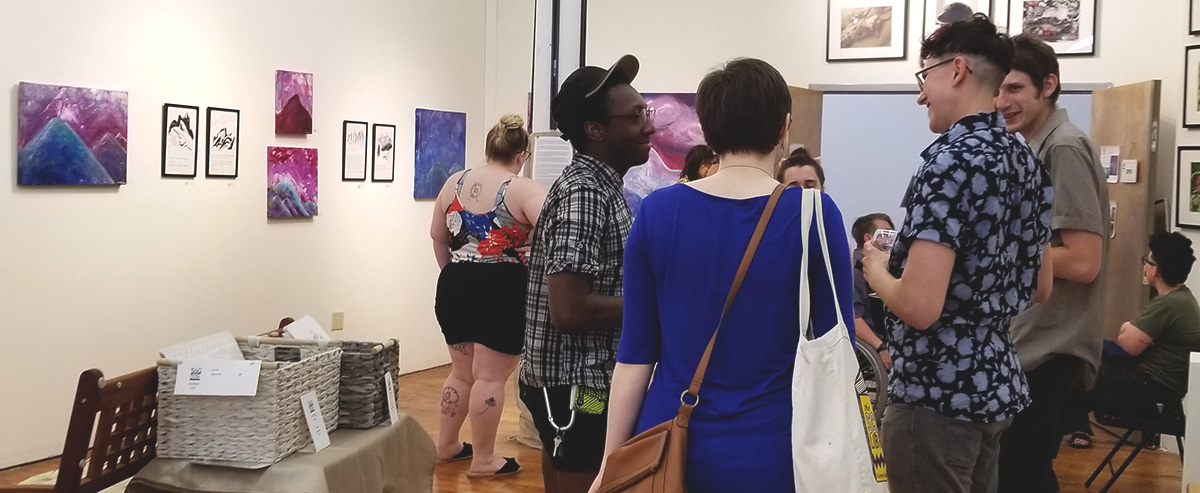


Highlights

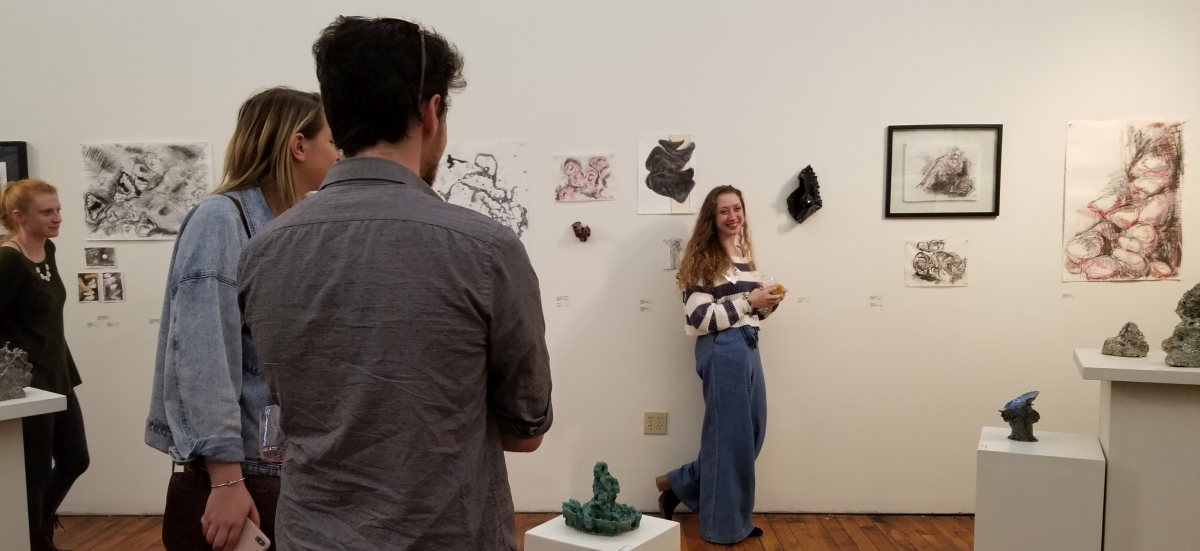
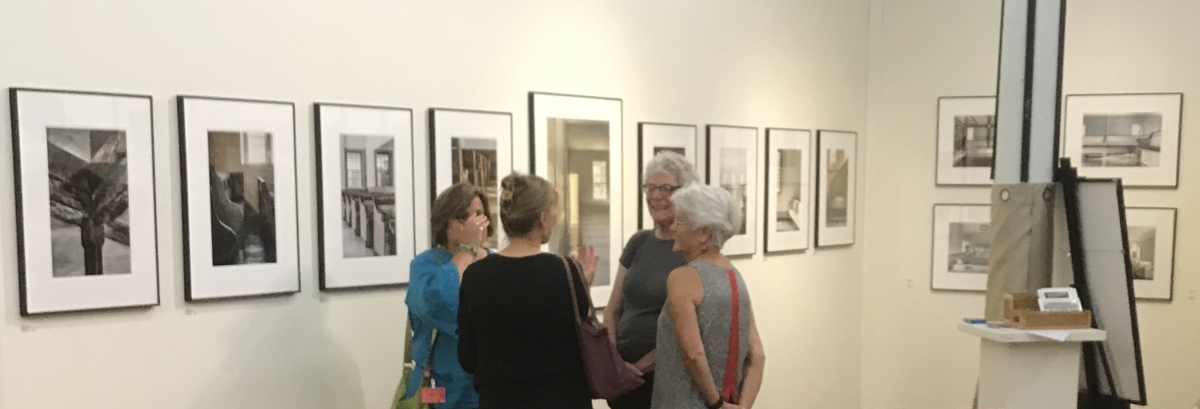
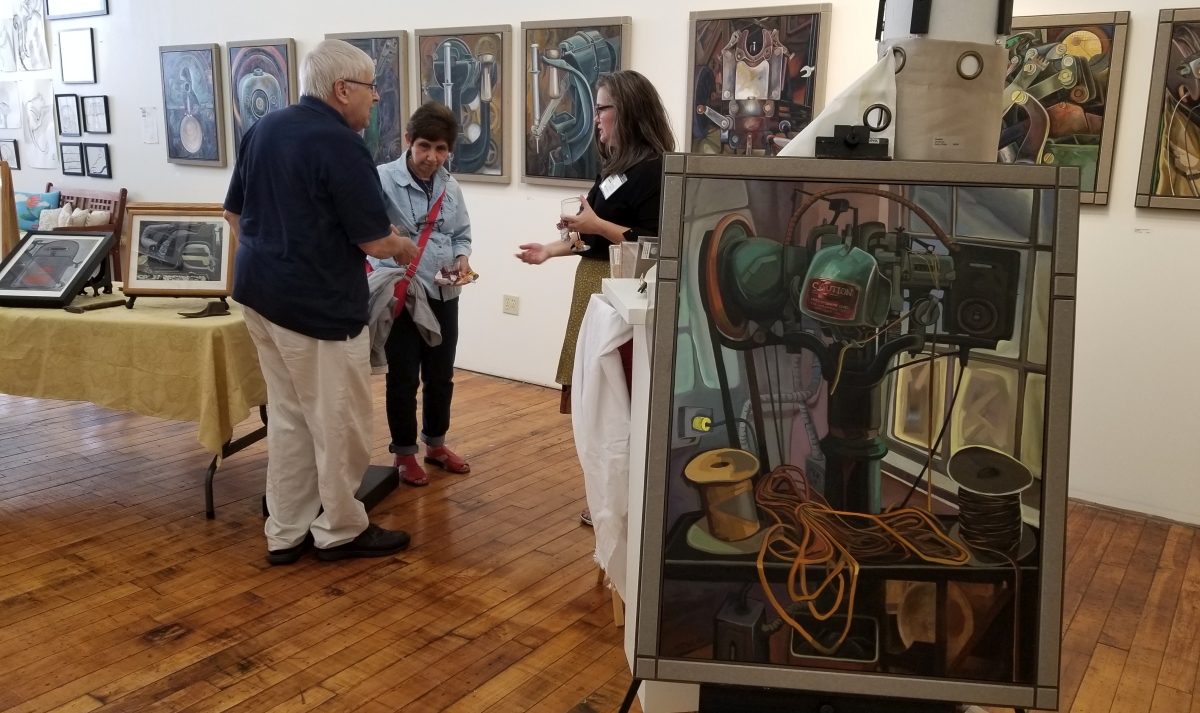
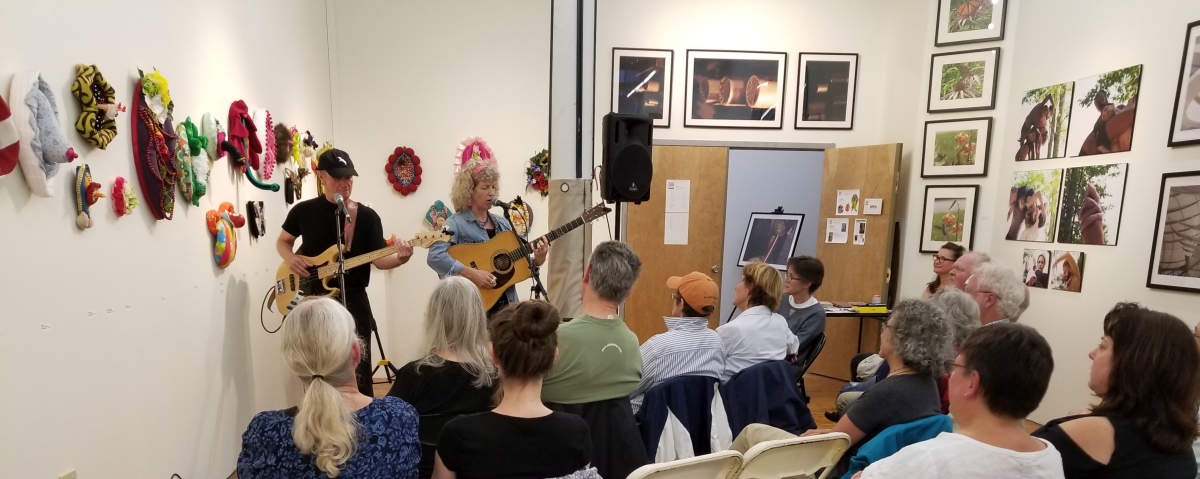
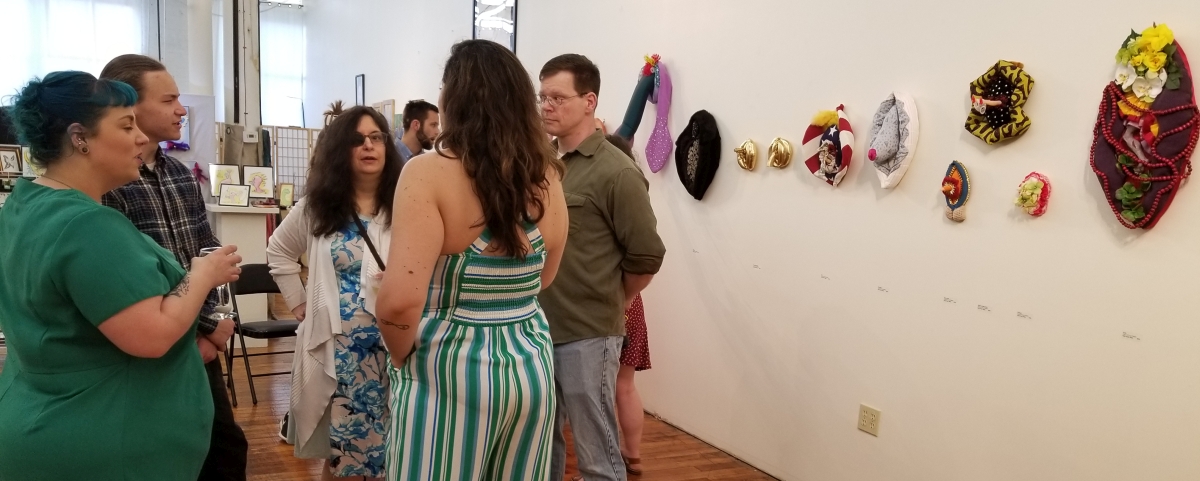
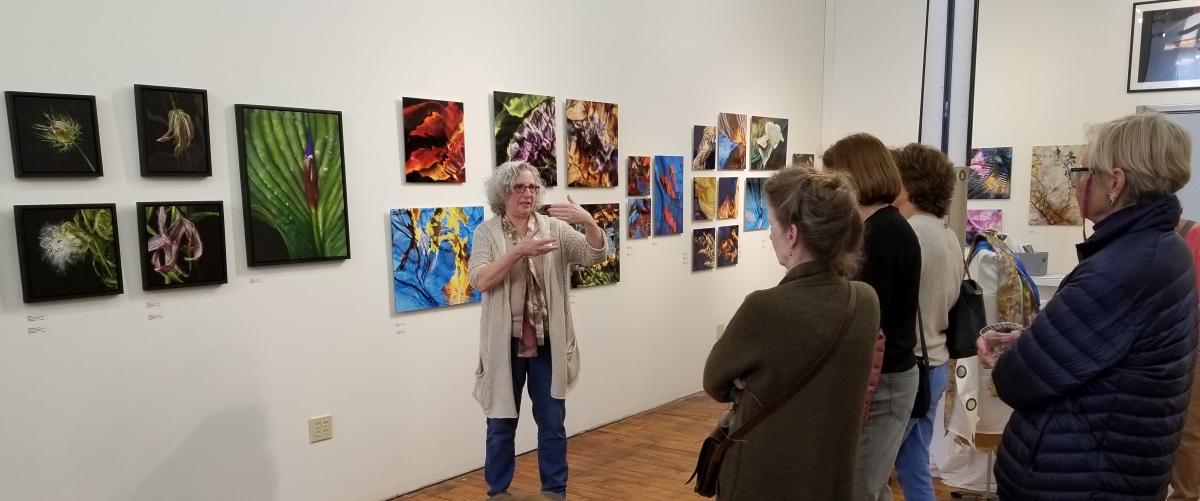
Highlights
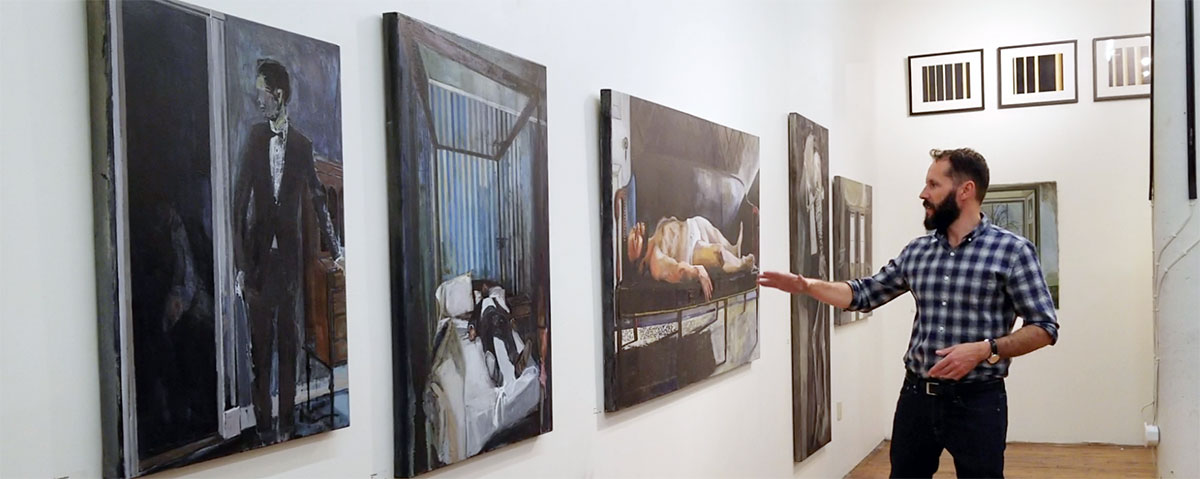

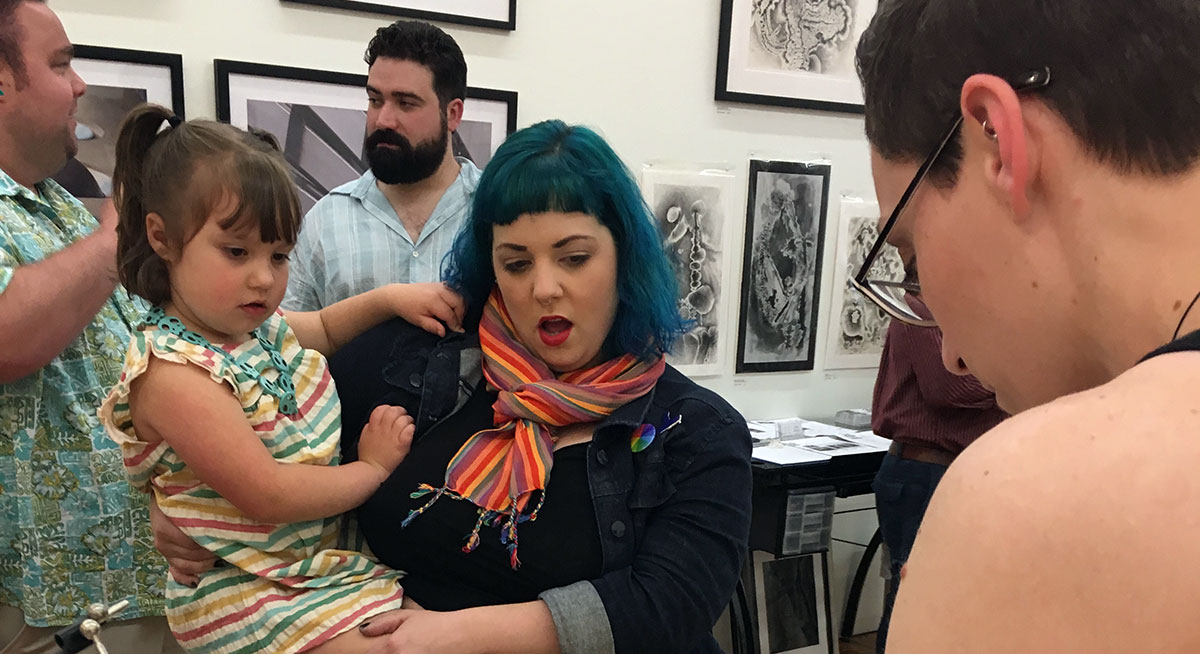
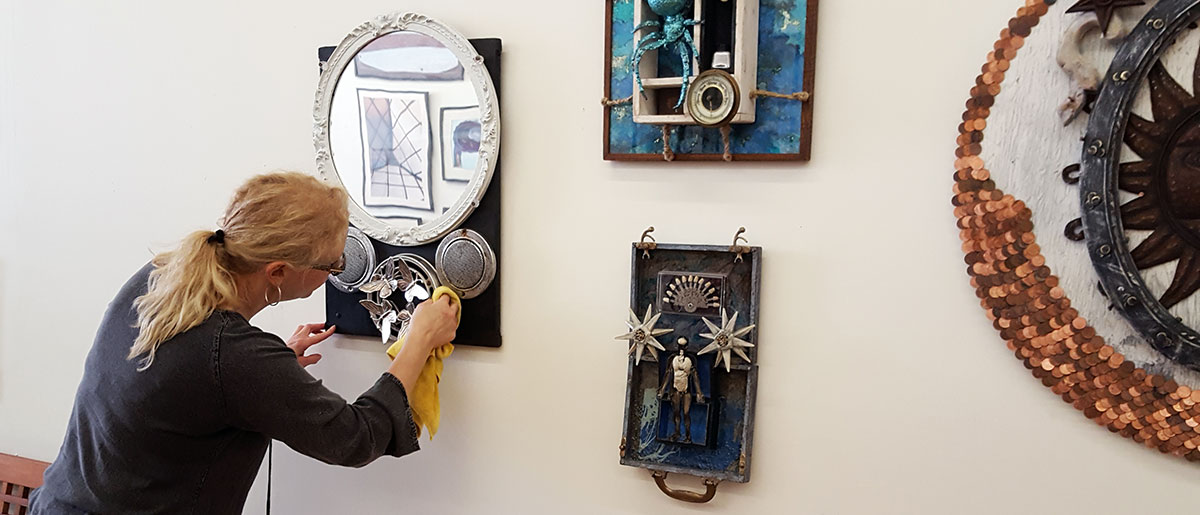
Past Projects
2019
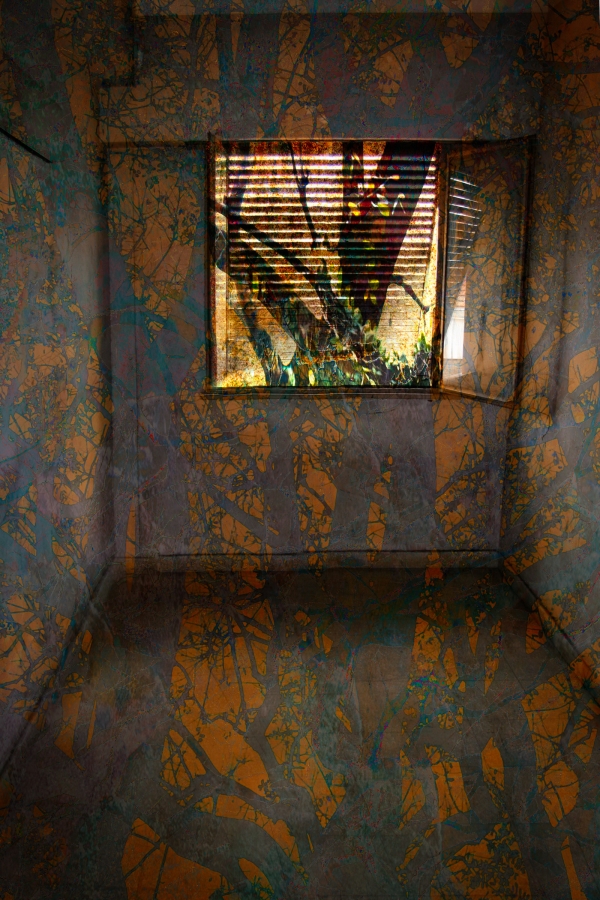
Estelle Disch
Memory and Justice
The former Escuela de Mecanica de la Armada (aka ex ESMA) is the site of one of the most notorious torture and disappearance centers during the last Argentinian dictatorship. An estimated 5,000 people were processed through this former school for navy mechanics. Only about 200 detainees emerged alive; the rest are counted among the 30,000 disappeared.
The images in this show are Estelle's artistic response to a deeply haunting place and the terrifying memories it holds.
"There are many trees and fascinating textures, accompanied by the unsettling screeching of hundreds of parrots and the disheveled aspects of many buildings. I wander the site, trying to make sense of what happened. I despair at the fact that humans connected to this place stole newborns from the arms of their mothers and pushed people alive from cargo planes into the sea. I marvel at the fact that anyone emerged alive. And I rejoice at the fact that many of the children born there and placed in illegal adoptions have been found and learned their real identities."
The ex ESMA campus in Argentina is a mix of horror and justice. In 2004 it was declared a Memory and Human Rights Space and human rights organizations now have displays and archives in many buildings. Educational placards line the roadways offering stories about the disappeared and historical information about the dictatorship and the justice that followed.
April - May 2019
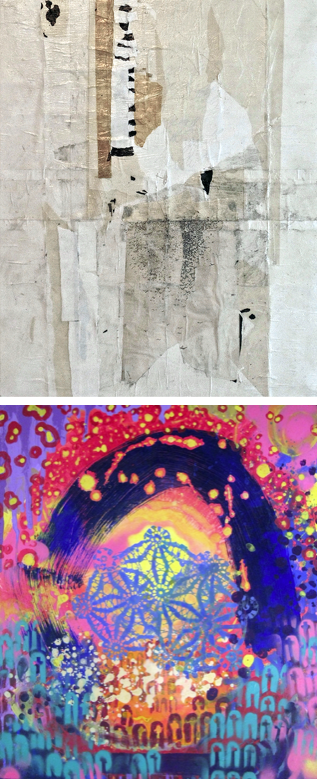
David Baggarly & Tim McDonald
Counterpoint
..the wild freedom of the dance, extasy
silent solitary illumination, enstasy..
~Gary Snyder
The two lines above from American poet Gary Snyder's "What You Should Know to Be a Poet" describe the foundation upon which this exhibition is based. The two bodies of work act in counterpoint to each other.
The first, mixed media paintings by David Baggarly, are a dance of color, materials, symbols, and processes that build to a bursting visual climax reflecting a mystic's ecstatic worldview, philosophy, and faith.
In counterpoint, Tim McDonald's collages, made up of found papers and marks, canvas remnants, and tape, are born from an immersion in Zen Buddhism and offer a quiet contemplative approach; like listening to snow fall.
Both artists, through contrasting approaches, are exploring paths toward a communion or attunement with what might be referred to as the oneness to which all things return.
June - July 2019
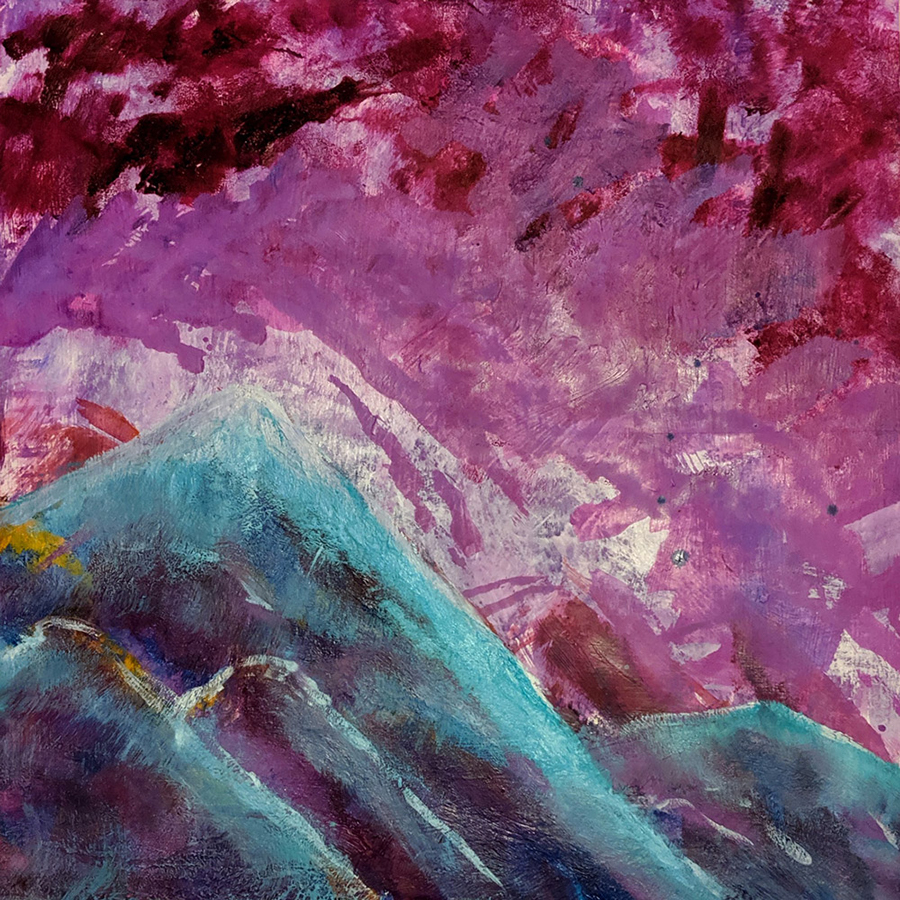
Penina Gal
Asylum
Peninia is working on a large project exploring three stories of her family's experience over 3 generations of migration and integration. "Asylum" is the first part. This will be the first time this project is presented to the public.
It revolves around her grandmother's experience escaping the Nazi invasion of Paris and leading a group of Jews, including her young father and aunt, across the Alps into Italy, where they were able to board a ship and become part of the small number of refugees allowed into the United States at the end of WWII.
Ultimately the project will include exploration of her father growing up in the tenements of the Lower East Side of Manhattan. The third part is her own story, building on her family history and exploring the theory of generational trauma.
July - September 2019
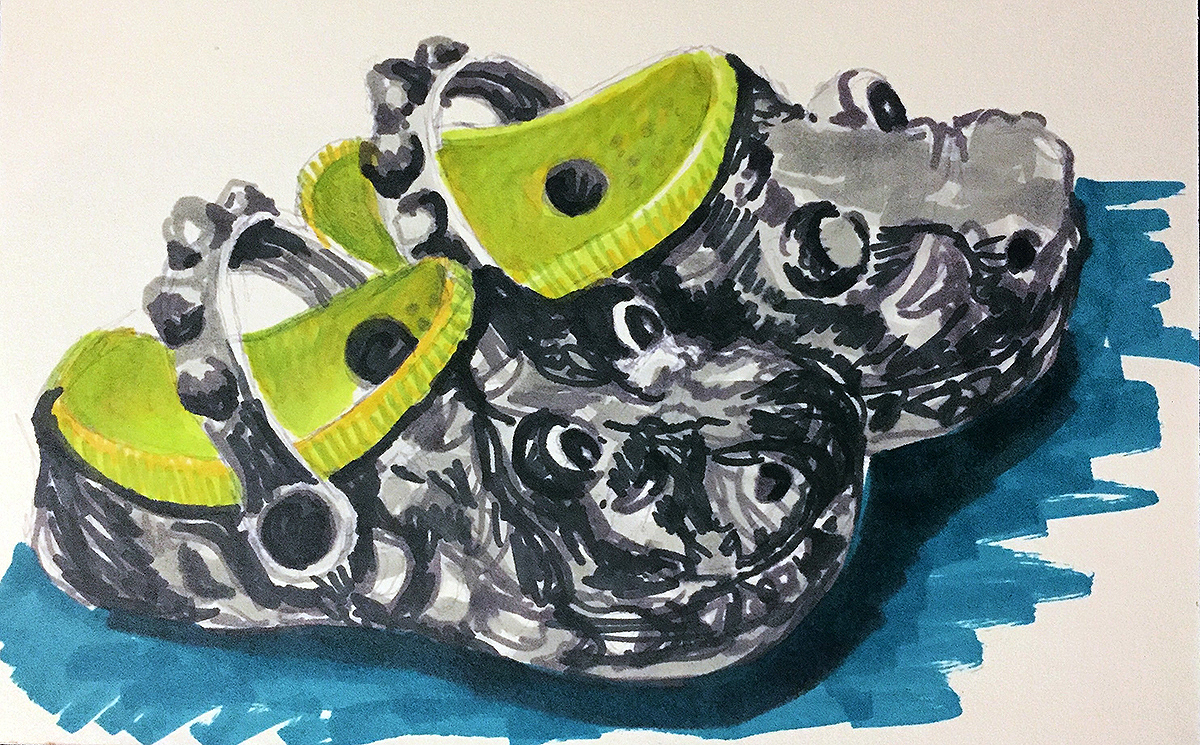
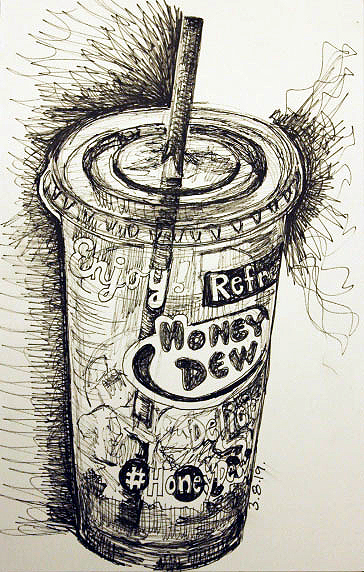
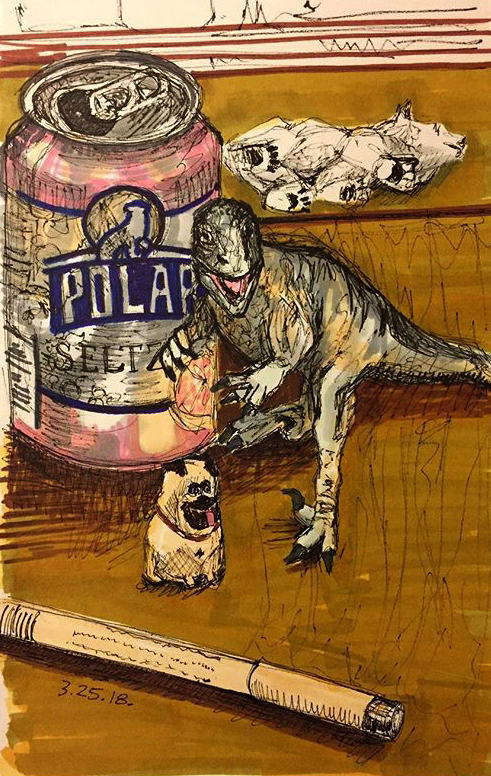
Meghan Dinsmore
The Stillness Every Day
The essence of the artistic practice of still life is to create a picture of a set of objects through any artistic medium. It is often used to improve skills intrinsic to artistic work: composition, rendering of shading, volume, lighting, perspective, experimentation with styles and media. Still life is often the focus of finished works. As a genre it can be very accessible as the subjects are often common household items, sometimes bowls of fruit and fancy silver, sometimes yesterday’s fish, depending on the artist!
Another, more modern, artist practice is that of a drawing a day, or a sketchbook that must be filled. Meghan Dinsmore has been doing a daily sketching practice for some time and posting many of her pages on Instagram. As we watched #thesketchbookproject growing, I saw a wonderful through line of still lifes she was creating of the very mundane that sits in front of most of us on any given day. Starbuck’s lattes, bags of chips, our favorite coffee mugs. Meghan’s confident, but just a little jittery, marks play up and play with the ephemeral nature of her objects. Yet, she is careful to complete the labels on the cans, sacks, and jars. A Warholian gesture to the prominence of brands and packages as our life’s objects in today’s world. Considerable enjoyment, and depth of feeling, is added to these daily ruminations because Dinsmore, in contrast to classical, stodgy ideas about still life, includes her particular “every day”—her son’s toys, the tools of her art, and grocery items.
Meghan says:
“Sketching daily, or close to daily, is a way for me to connect to a moment in time. A moment in the day when I am focused on just creating and observing something around me--typically my coffee cup or my son’s toys. For me it is not the subject that is necessarily important, just that I find some time to draw or paint each day to record that I was here. Depending on the amount of time I have, which could range from 2 minutes to 2 hours, I look at objects in front of me that I can (hopefully) complete and materials that I have on hand. It is often hard to find long periods of time to create, especially between teaching and being a mom, but I find sketching for even ten minutes can be rewarding. My sketches have created a visual timeline of my life, the objects in it, and my artistic progression.”
September & October 2019
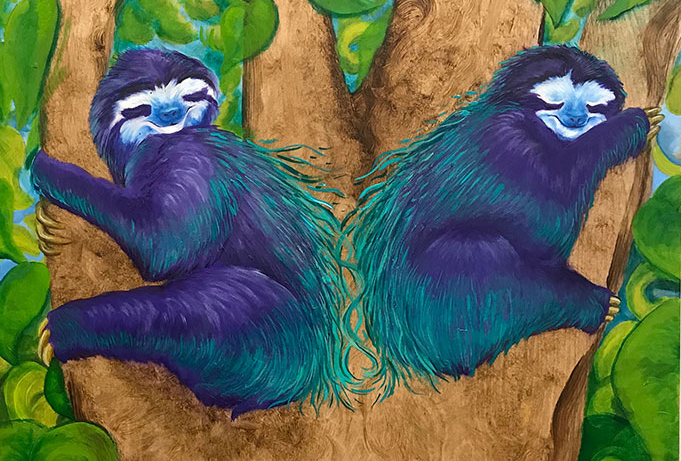
Helen Granger
The Talking Animal Series
The talking animal series grows directly out of my Inner Demons and other observational work. Most of the inspiration for this series comes from meditation on myself, humans, and life in general.
Almost all of my artwork starts with drawing. My sketchbooks are filled with creatures spouting “their” thoughts. I choose from this lot which animals and which words to make into paintings. This work plays with our cultural history of using animals as substitutes for humans in stories to teach and to explain ourselves to others.
These concepts and my way of painting started well before the World Wide Web and they now relate directly to our cultural need to meme. My own work has become a reflection of society at large. I enjoy the irony of making beautiful oil paintings out of simple, sometimes silly, thoughts.
In this new work in the series I am using my graphic design knowledge to concentrate on the text—using calligraphy rather than block lettering—and focusing on the quality of the painting. I want to grab the viewers attention and engage them in a dialogue. Each animal confronts You. They face the viewer directly or gaze in the distance but always out to you to give you their point of view. Connection through a painting from my mind to your eyes to your mind.
October–November 2018
2018
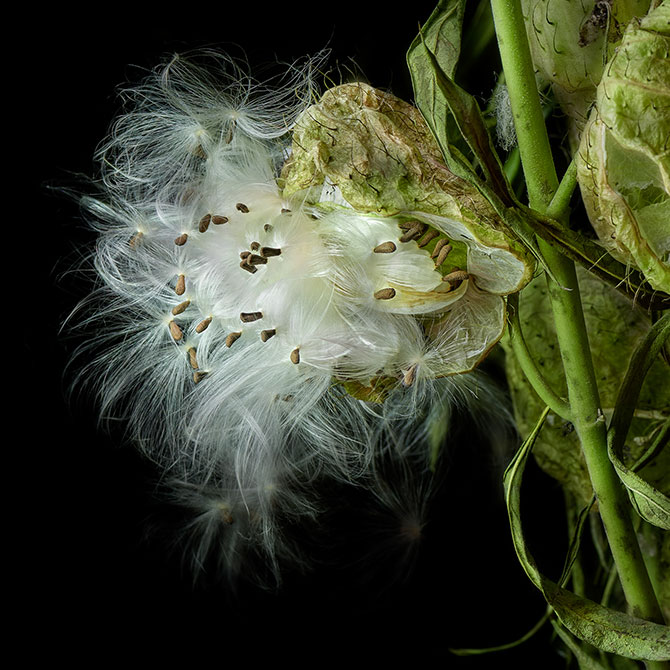
Deb Ehrens
Adrift & In Stillness
What began as a childhood fascination with the painted flowers on my grandmother’s china has become a lifelong love of botanical imagery.
With Adrift I have created what seems like a contradiction—still lifes in moving water.
In Stillness my compositions are no longer buffeted about by wind and water. Instead of being at the mercy of ever-changing cloud cover and tree shadows, the light is literally in my hands.
Deb Ehrens uses her camera to create contemplative and painterly imagery. She learned the basics of black and white photography as an adjunct to her early career as a journalist, and more recently has studied with Harold Ross, Dan Burkholder, Alison Shaw, Ron Wilson, and taken classes at Rhode Island School of Design and Maine Media College. An on-going mentorship with painter Deborah Quinn-Munson has been instrumental in developing her artistic eye. Deb lives in Dartmouth, MA and is a Juried Artist Member of the Cape Cod Art Center, Exhibiting Member of the Rhode Island Center for Photographic Arts and Elected Artist Member of the Rhode Island Art League.
April 2018
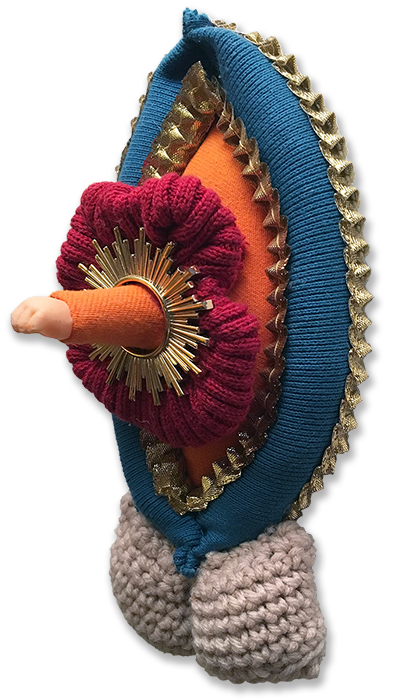
Kate Frazer Rego
Labia Series
I started the Labia Series in 2015 after attending Haystack Mountain School of Crafts. The series has progressed over the years both in size, material, and theme. The project came about quite honestly in response to my daughter being born. I struggled to find a way to visually communicate such an intense experience, I mean really Mary Cassatt had already kind of nailed it. So I started thinking about women and the female image in art. I feel women are often portrayed as the object of sexual desire, the mother, or the tragic heroine. I saw that there were so many other more nuanced stories to tell. So I started using the vagina as a framework upon which many different stories are hung. Some funny, some twisted, some dark and mournful and certainly always pushing the narrative of the complex female experience.
A native of the South Coast region, Kate earned her Bachelor of Fine Art in Sculpture from the University of Massachusetts Dartmouth and her Master’s of Fine Arts from Boston University. Kate’s work has appeared in exhibitions both regionally and nationally, and she has been awarded the Constatin Alajalov Scholarship and the CFA Visual Arts Scholarship. Kate has taught art at the elementary, secondary and higher education levels for the past seven years pushing her students to discover their own studio practice and love of process.
June 2018
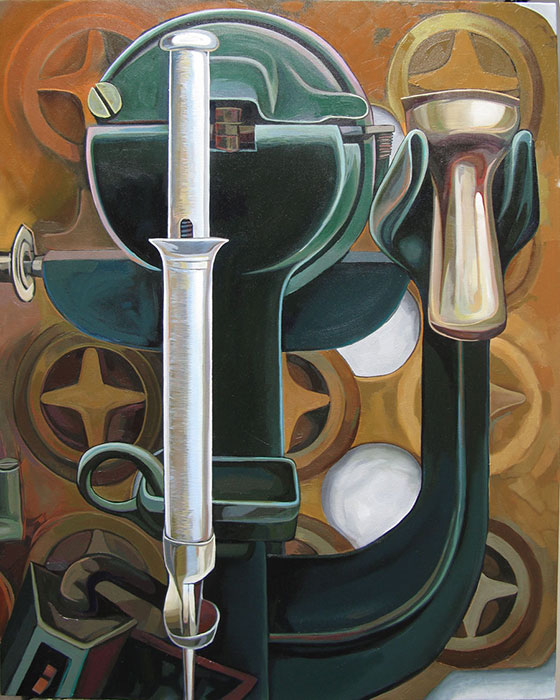
Kathy Hodge
ST. HUGH’S BONES
“On a studio tour in 2005 in the small town of Warren, RI, I chanced upon a small shoe making shop. The heavy, oily, cast iron machines standing like totems around the perimeter of the room fascinated me. I decided to use the machine imagery to begin to this series of oils. Although the shoemaking machines were my starting point, these paintings are not about making shoes.”
“In casting about for an explanation of what drew me to use the shoemaking imagery, I came upon the story, written in 1597 by Thomas Deloney, of shoemaker St. Hugh who was hung in 300AD for his Christian beliefs. I realized I was a journeyman like the others, taking the ‘bones’ of the shoemaker and repurposing them as my own tools.”
Kathy Hodge was born in Providence, RI and began painting in oils as a teenager. She has completed series inspired by the RI coastline, church facades, Russian cityscapes, views from a train and shoemaking machinery. Recently her work has reflected her impressions as Artist in Residence in 11 National Parks and 2 National Forests. Her studio is in East Providence.
July & August 2018
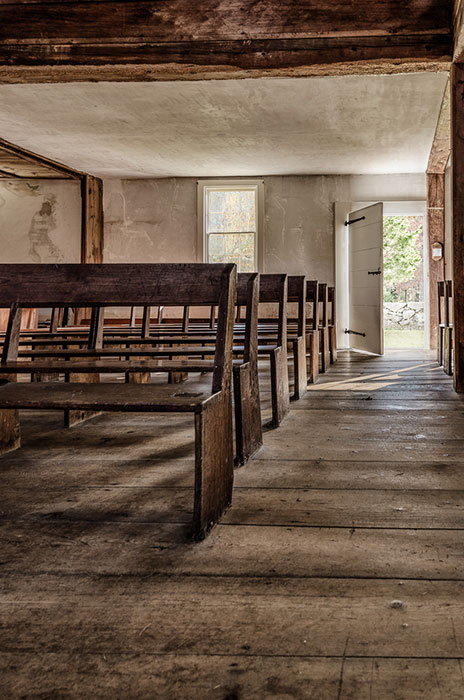
Jean Schnell
Framing the Light
My Framing the Light photographic series came out of a composition class assignment but has become so much more than that. A true calling. A labor of love. A “wow” type of personal journey.
In photographing the spaces used for Quaker meetings I have had the opportunity to illustrate universal feelings shared by others in this faith. I have studied Quaker history, beliefs, and practices and reexamined my own relationship to my Quaker faith and practice.
The words I choose to describe my Quaker experience are: light, simple, centered, peaceful, and quiet.
The buildings tell stories of both the past and present meeting communities that have worshiped in them. It is what takes place inside the buildings that is sacred. The collective, spiritual, seeking experience makes Quaker meetings unique. A meeting for worship is born in Light, centered in quiet and peace. It is the simple act of expectant waiting.
Jean Schnell is an emerging artist in fine art photography. After retiring from a career as a nurse and a health coach, she has been immersing herself in the photography world. Two recent projects focus on buildings: a series on the abandoned Marine Hospital in Martha’s Vineyard and all twenty-three Quaker meetinghouses in Massachusetts.
September 2018
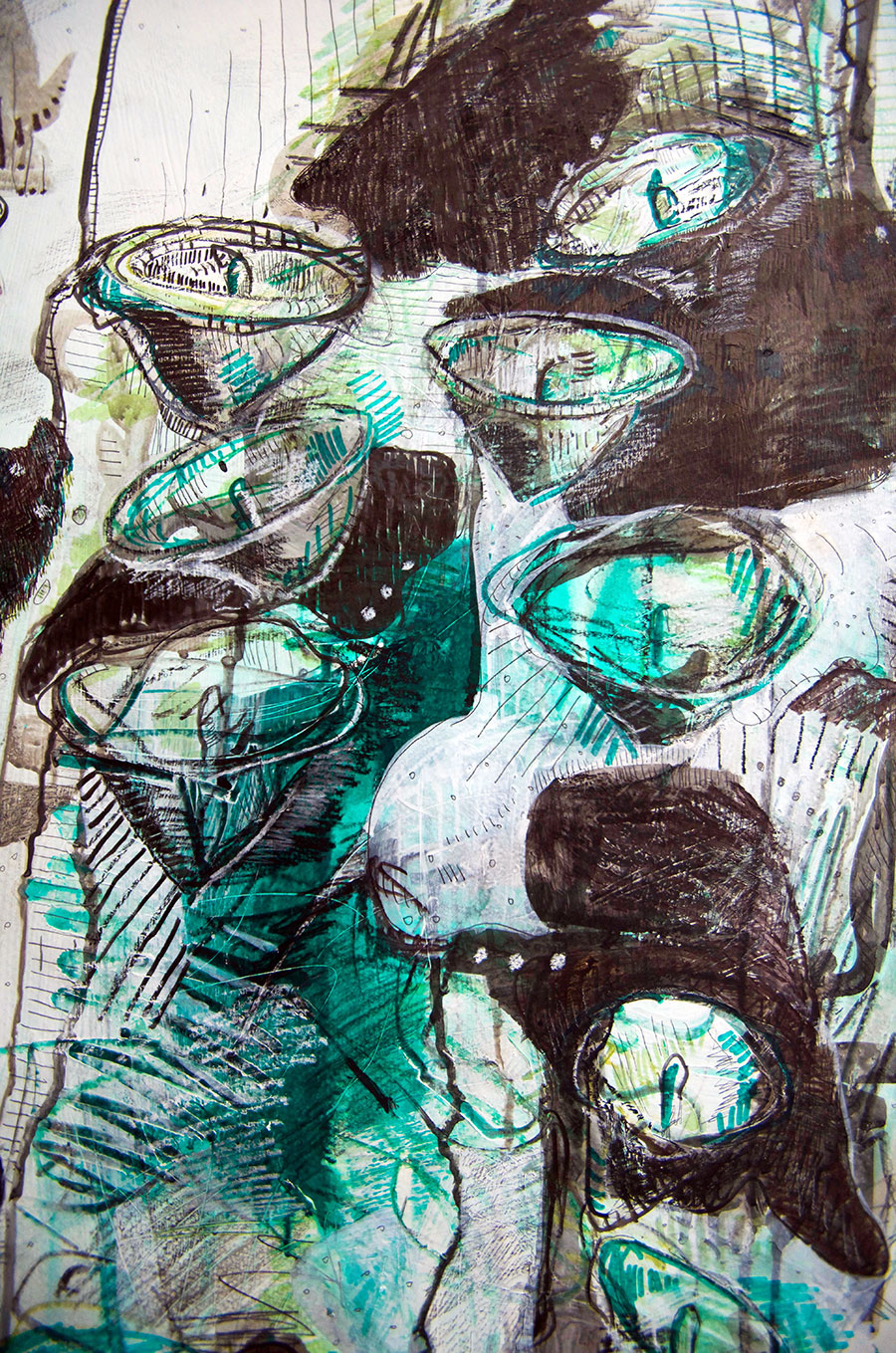
Em Adler
What Grows from the Bottom
My work has always revolved on the fringe of the cycle of life and death. The continuous circle that connects humans, animals, and every other living thing. Living on the eastern shore all of my life, I began my artistic exploration by collection even before I knew that I was an artist. Bones, shells, rocks, dried seaweed, rusted objects piled up on dressers, in drawers, and naturally began to transform themselves into sculptures. Beginning purely as found object sculptures, the shapes and textures slowly evolved into other mediums, paintings, drawings, and arrangements leading into hand pinched ceramic sculptures.
Valentines Day of 2017, my best friend lost his battle to depression and ended his life. Following his loss, I began recreating and reimagining the landscapes of his home in Stroudsburg, PA, the Pocono Mountains. This project originally started as a direct response to the grief of his passing, that eventually evolved to figurative desolate landscapes. Parallel to these ‘Grief Landscapes/ Landscapes Through His Eyes’ was the ceramic series, ‘Of the Sea Floor.’ This series focused on a way of handling clay that was as much about the hands making the mark as the form that it created. These two bodies of work became about the physical relationship and the emotional space in between the tops of the mountain peaks and the bottom of the sea floor.
With the year anniversary approaching, the grief of reliving this traumatic loss moved me from the space in between directly to the bottom. My current work is about what grows from the bottom. This grouping still includes “Of the Sea Floor” series, continuing with familiar imagery of coral and seaweed with an addition the human presence, rocks, mushrooms, dead flowers, and the night sky. There’s an insertion of hope, as when hitting rock bottom, the only direction is up. This work is not only about the physical location of the bottom, but the psychological location of the bottom.
October 2018
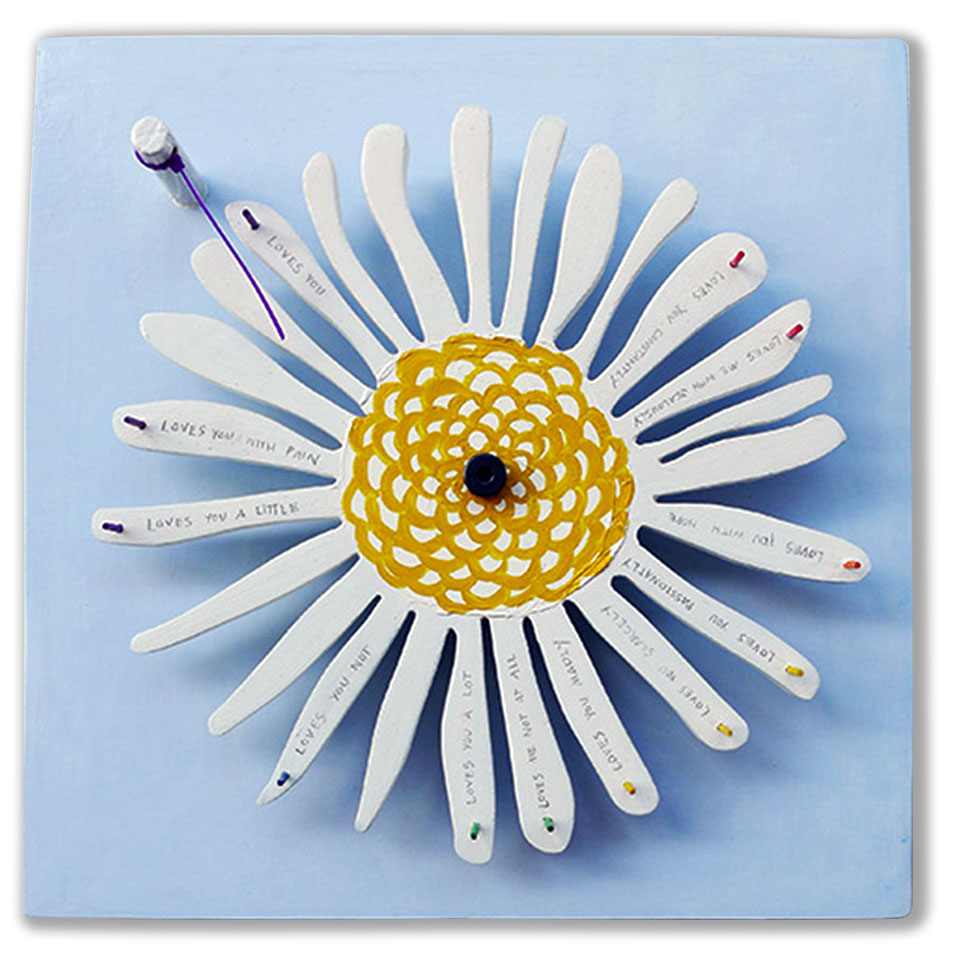
Holly Popielarz
Fair Play
This body of work started with the continual opening of rejection letters.
Why is it so invigorating to take a chance? Participation is necessary for the plot to move forward. We all know it’s a gamble, a crap shoot—take that turn, move up, pick a card, spin the wheel, hole in one—games bring a playful, distracting element to a dark and philosophical questioning of our reality. I bought a Magic Eight Ball, hoping for better results. I read a book about games “Reality Is Broken: Why Games Make us Better and How They Can Change the World”—To realize people have long turned to games or extensions of reality to compensate for what the real world is currently unable to satisfy. A friend reminded me that William Shakespeare used the Rota Fortunae spun by a blindfolded woman serving as a broker of plot progression, or to discuss fate. Medieval tarot decks feature The Wheel of Fortune. Buddhism has the Wheel of Dharma. Across cultures and history the wheel is seen as a tool of understanding, reconciliation and diversion from reality and tragedy.
Slowly, I felt like playing again.
As others have before me, I began working with this symbol as a way to accept my own fate and as a way to think about the uncontrollable and often restricting conditions of our world.
I must enjoy the process and it must challenge me. The wheels are interactive, made mostly of wood, they spin, and are painted with oil. Some outcomes are fixed. Sometimes you can earn a prize for playing.
November/December 2018
2017
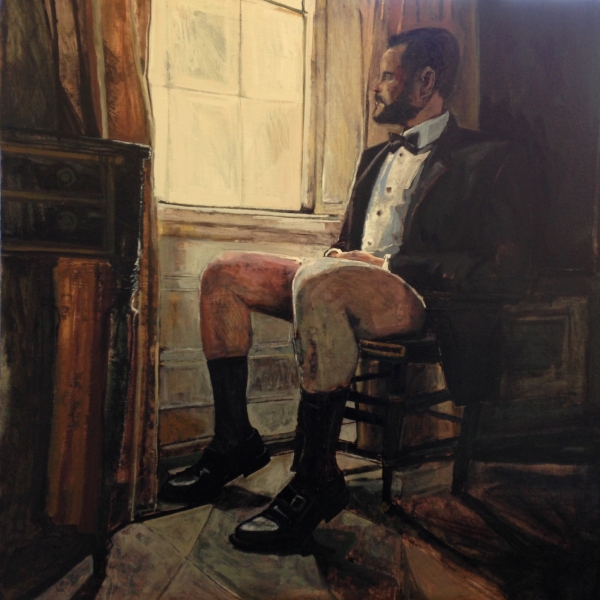
Michael Walden
Labyrinth of Desire
This body of work explores a journey of emancipation from the
constraints of societal conformity, a paragon presented to the world
only to be overshadowed by a gaze of disillusionment and feelings of
estrangement and malaise. Realizing that desire in all its forms is
about the pursuit of happiness, and understanding that it is
attained just before it is lost.
"Woe to him who has nothing left to desire... We enjoy less what we obtain than what we hope for, and we are happy only before being happy." ~ Rousseau
Michael Walden is a painter and print maker living and working in Westport. This show is an extension of and progression from a recent solo show in New York City.
October 6 to October 28, 2017
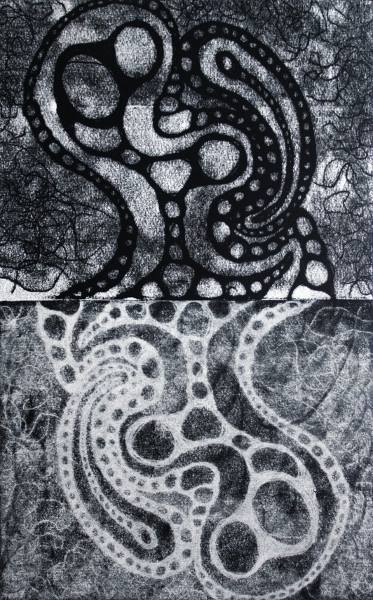
Brooke Mullins Doherty
Biorhythms
For the past four years, I have been exploring events in my life and my reactions to them through a weekly monotype series, my Biorhythms prints. The prints are trace monotypes, combining the positive print of white paper with drawn ink lines with the negative reversal of the image that is left on the inked plate. I follow a changing set of rules within each year's prints that guide my process and imagery, but the overall rules involve taking time to reflect on my week and its most significant occurrence before making the print, which provides visual form to my life as well as structure to my studio routine.
August 25 to September 23 2017
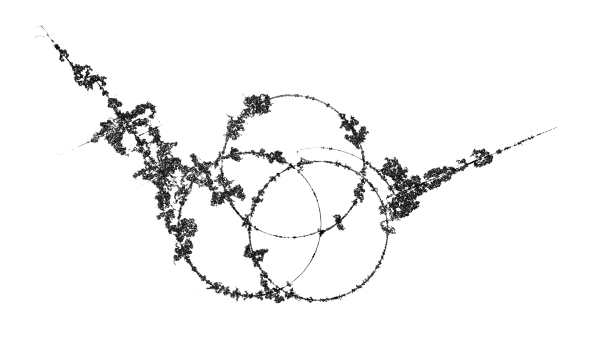
Kim Gatesman
Fluctuations in the Electric Fluid
Gatesman's current body of work explores the fundamental forces of electricity and magnetism. Through experimentation and the use of both traditional and digital printmaking techniques, she makes these unseen physical forces visible and discovers a vocabulary of marks that are produced when these forces are manipulated.
One series of prints is comprised of electrostatic monotypes — a process that Kim has developed which combines xerographic with traditional printmaking processes. This technique dissects and re–imagines a laser copier's primary operation. Her process uses slightly different components, but functions in a similar way. The patterns revealed in these prints are fused to thin japanese paper and backed with cotton rag paper via a traditional technique called chine colle.
Through another series, Kim explores the common phenomenon of lightning. The pieces in her "Plasma Series" are digital prints, which are enlargements of small-scale lightning experiments with metallic film and microwaves.
July 14 to August 12, 2017
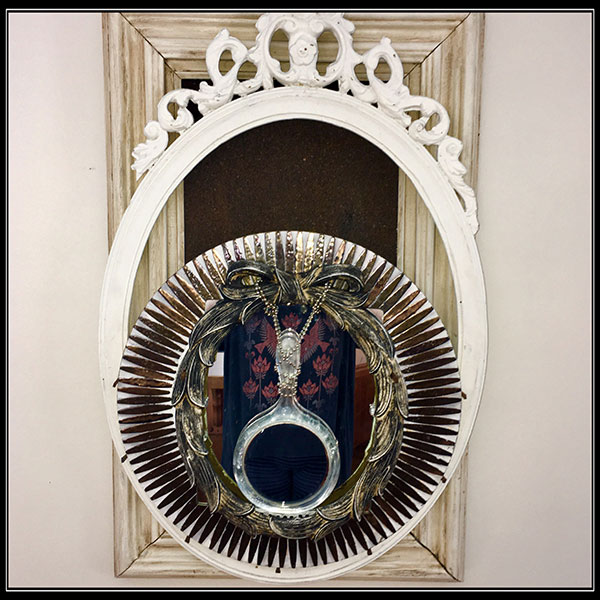
Holly Carruthers
Junkstaposition
Holly Carruthers is a multi-media assemblage artist seeking to make sense of a world full of stuff. She finds artistic possibilities can arise from putting together disparate things like vintage curiosities, antiques, hardware detritus, and junk. From Ms. Carruthers, the result is art that is surreal, dream-like, lyrical, and otherworldly.
Her vast collection of pilfered wood, glass, metal, ephemera and accoutrement are assembled, fused, overlapped, reorganized and juxtaposed to create unexpected and ambiguous relationships that creates a dynamic spacial continuum that is multi dimensional, exploratory and experimental.